13. Powerscourt Gardens, Enniskerry, County Wicklow, Ireland

Elizabeth Burnett / Flickr: lizzyinfocus
15. Garden of the Sítio Roberto Burle Marx, Rio de Janeiro, Brazil

thefuturistics / Flickr: thefuturistics



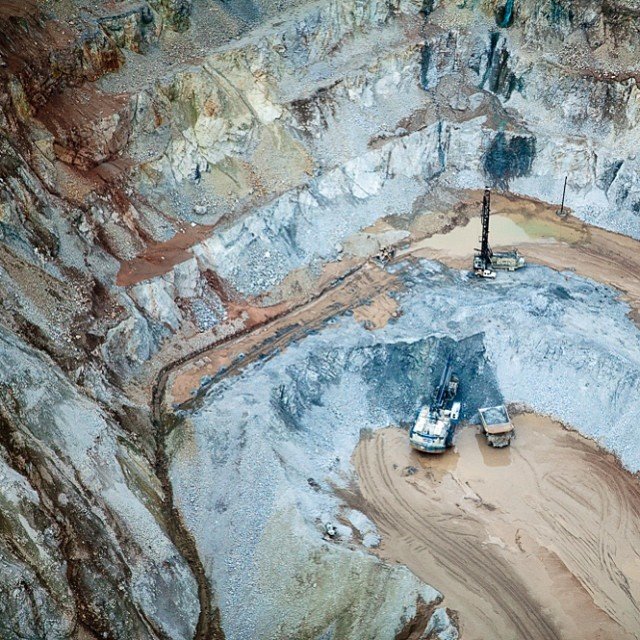








 A fabulously nimble creature…
A fabulously nimble creature…
 It’s also a skilled and versatile hunter.
It’s also a skilled and versatile hunter.
 The dog’s remarkable agility makes it just as comfortable near water…
The dog’s remarkable agility makes it just as comfortable near water…
 As it is on land…
As it is on land…
 Sand…
Sand…
 Or somewhere in between.
Or somewhere in between.
 With its acutely coordinated legs moving in unison…
With its acutely coordinated legs moving in unison…
 It can handle any terrain.
It can handle any terrain.
 Yes, the dog is perfectly elegant in every way…
Yes, the dog is perfectly elegant in every way…
 Maintaining unflappable focus…
Maintaining unflappable focus…
 Whether in motion…
Whether in motion…
 Or at rest…
Or at rest…
 Rarely do these magnificent animals err in judgement.
Rarely do these magnificent animals err in judgement.
 With the utmost levels of both speed and accuracy…
With the utmost levels of both speed and accuracy…
 Every decision the dog makes is approached with supreme caution…
Every decision the dog makes is approached with supreme caution…
 Ensuring that things always go exactly as planned.
Ensuring that things always go exactly as planned.
 For these sprightly companions, even playtime becomes an impressive display of wit.
For these sprightly companions, even playtime becomes an impressive display of wit.
 But it’s not all fun and games for man’s best friend. The dog occasionally stops to ponder its noble existence…
But it’s not all fun and games for man’s best friend. The dog occasionally stops to ponder its noble existence…
 Maintaining its poise, of course…
Maintaining its poise, of course…
 Delicately taking it all in…
Delicately taking it all in…
 Instagram: thriverlife
And letting its guard down only briefly to enjoy the tender embrace of its master…
Instagram: thriverlife
And letting its guard down only briefly to enjoy the tender embrace of its master…
 Before returning to its alert self.
Before returning to its alert self.
 But each long and glorious day will eventually come to an end, and even the dog must succumb to peaceful slumber…
But each long and glorious day will eventually come to an end, and even the dog must succumb to peaceful slumber…
 Gracefully sleeping…
Gracefully sleeping…
 And remaining ever-vigilant.
And remaining ever-vigilant.

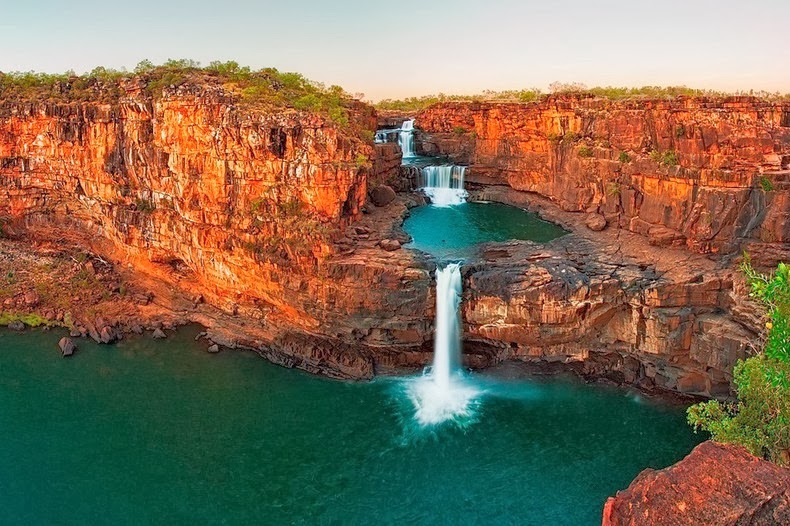 Like other waterfalls in the tropical regions of Northern Australia, most of the flow of the Mitchell Falls come from rain water during the wet season. The flow would then diminish as the Dry Season wore on. Mitchell Falls usually flow from the wet until anywhere between July to October.
The Mitchell Falls are accessible via a bush walk that takes a couple of hours over rough terrain. The walk is in a remote wilderness area and requires a reasonable level of fitness. A helicopter flight allows you to grasp the extreme ruggedness of the plateau, and is the only way to view many of the waterholes and surrounding area.
Like other waterfalls in the tropical regions of Northern Australia, most of the flow of the Mitchell Falls come from rain water during the wet season. The flow would then diminish as the Dry Season wore on. Mitchell Falls usually flow from the wet until anywhere between July to October.
The Mitchell Falls are accessible via a bush walk that takes a couple of hours over rough terrain. The walk is in a remote wilderness area and requires a reasonable level of fitness. A helicopter flight allows you to grasp the extreme ruggedness of the plateau, and is the only way to view many of the waterholes and surrounding area.
 Photo credit
Photo credit
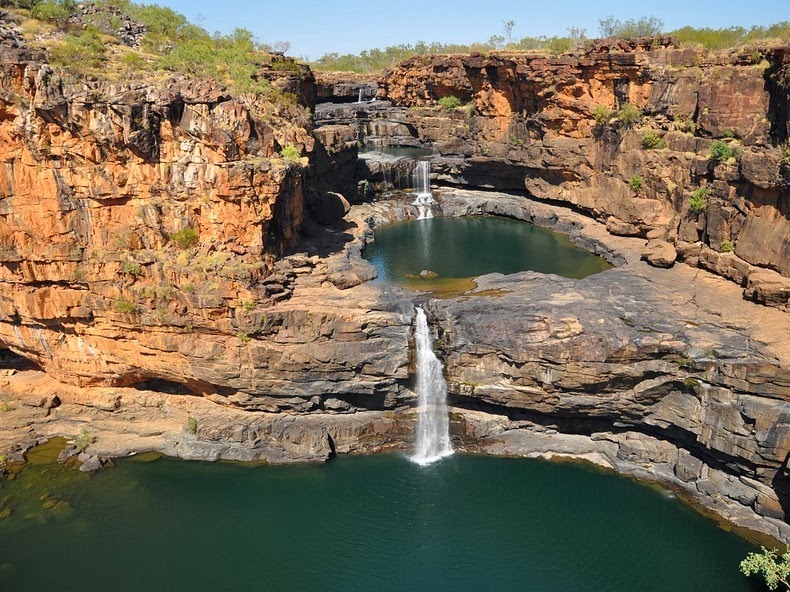 Photo credit
Photo credit
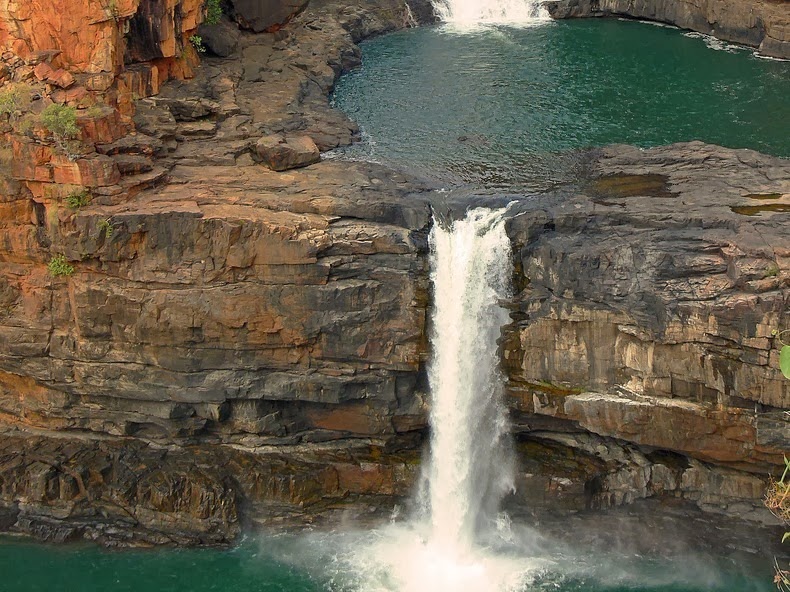 Photo credit
Photo credit
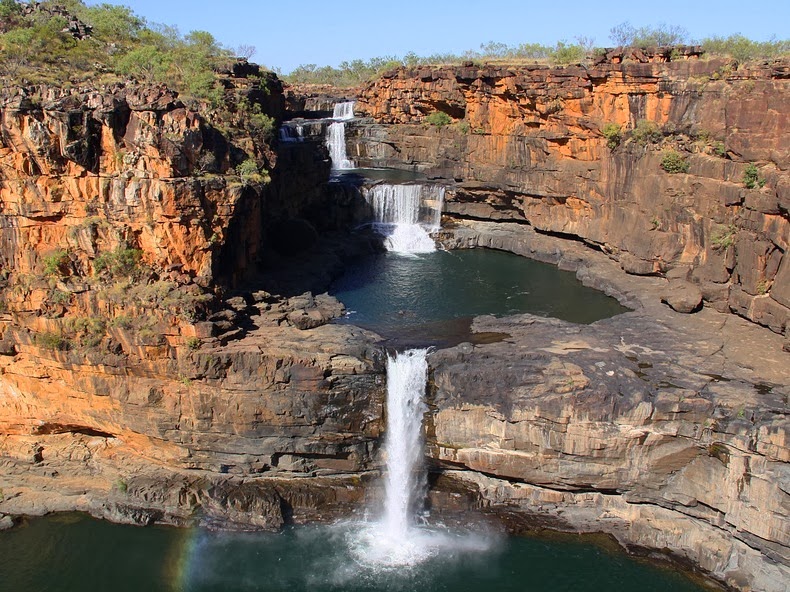 Photo credit
Photo credit
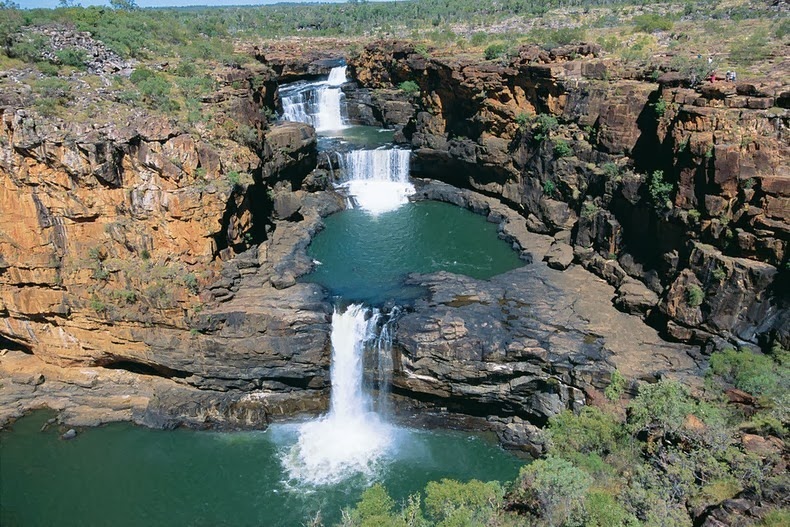 Photo credit
Photo credit
 Mitchell Falls during the dry season. Photo credit
Mitchell Falls during the dry season. Photo credit 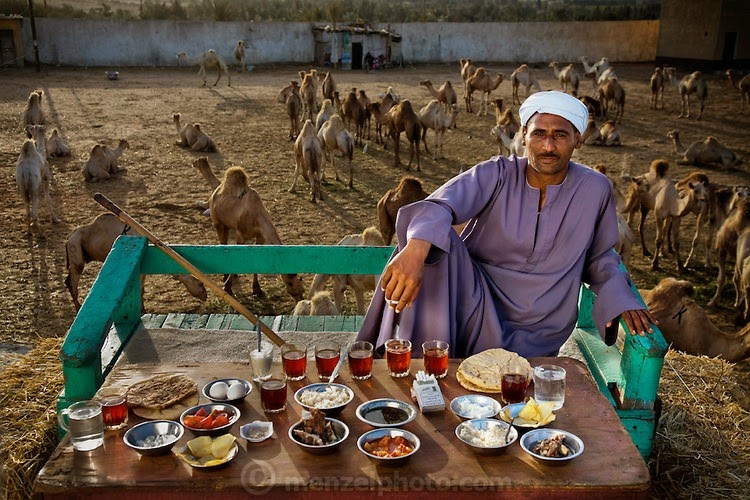 Camel broker Saleh Abdul Fadlallah with his day’s worth of food at the Birqash Camel Market outside Cairo, Egypt. The caloric value of his day’s worth of food on a typical day in the month of April was 3200 kcals. He is 40 years of age; 5 feet, 8 inches tall; and 165 pounds.
Camel broker Saleh Abdul Fadlallah with his day’s worth of food at the Birqash Camel Market outside Cairo, Egypt. The caloric value of his day’s worth of food on a typical day in the month of April was 3200 kcals. He is 40 years of age; 5 feet, 8 inches tall; and 165 pounds.
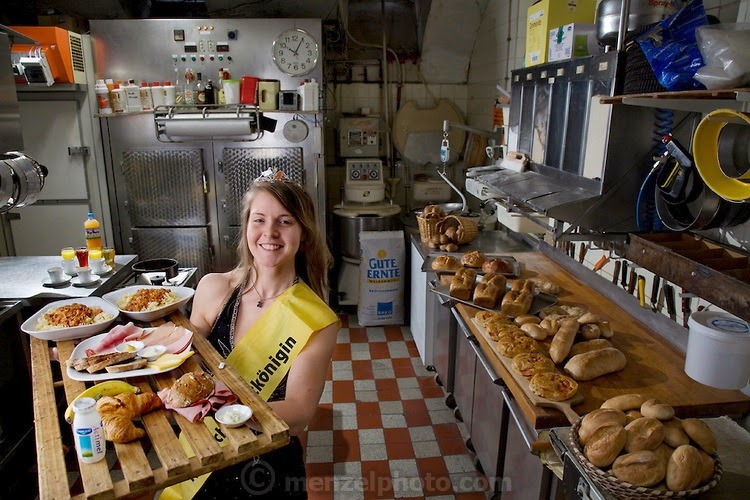 Robina Weiser-Linnartz, a master baker and confectioner with her typical day’s worth of food in her parent’s bakery in Cologne, Germany. The caloric value of her day’s worth of food in March was 3700 kcals. She is 28 years of age; 5 feet, 6 inches tall; and 144 pounds. She’s wearing her Bread Queen sash and crown, which she dons whenever she appears at festivals, trade shows, and educational events, representing the baker’s guild of Germany’s greater Cologne region.
Robina Weiser-Linnartz, a master baker and confectioner with her typical day’s worth of food in her parent’s bakery in Cologne, Germany. The caloric value of her day’s worth of food in March was 3700 kcals. She is 28 years of age; 5 feet, 6 inches tall; and 144 pounds. She’s wearing her Bread Queen sash and crown, which she dons whenever she appears at festivals, trade shows, and educational events, representing the baker’s guild of Germany’s greater Cologne region.
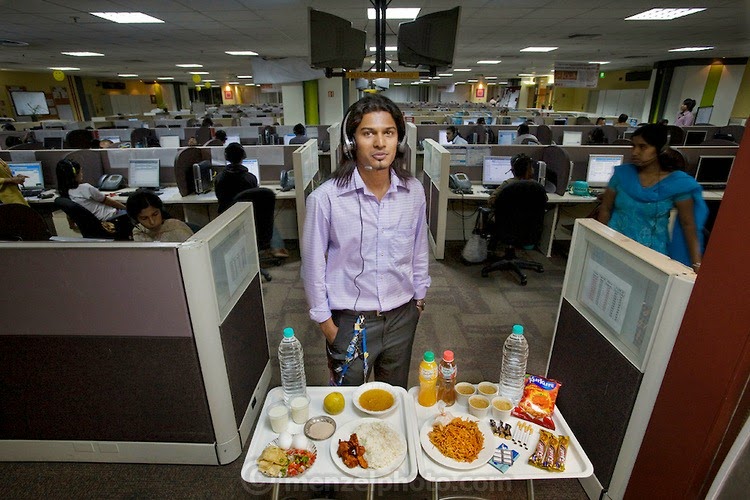 Shashi Kanth, a call center worker, with his day’s worth of food in his office at the AOL call center in Bangalore, India. He is 23 years of age; 5 feet, 7 inches; and 123 pounds. Like many of the thousands of call center workers in India, he relies on fast-food meals, candy bars, and coffee to sustain him through the long nights spent talking to Westerners about various technical questions and billing problems.
Shashi Kanth, a call center worker, with his day’s worth of food in his office at the AOL call center in Bangalore, India. He is 23 years of age; 5 feet, 7 inches; and 123 pounds. Like many of the thousands of call center workers in India, he relies on fast-food meals, candy bars, and coffee to sustain him through the long nights spent talking to Westerners about various technical questions and billing problems.
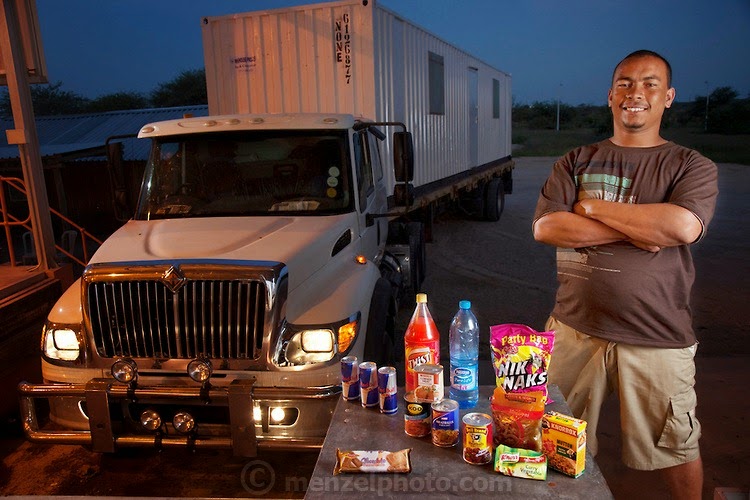 Tersius “Teri” Bezuidenhout, a long-haul trucker delayed by paperwork at the Botswana-Namibia border stands next to his truck with his typical day’s worth of road food.
Tersius “Teri” Bezuidenhout, a long-haul trucker delayed by paperwork at the Botswana-Namibia border stands next to his truck with his typical day’s worth of road food.
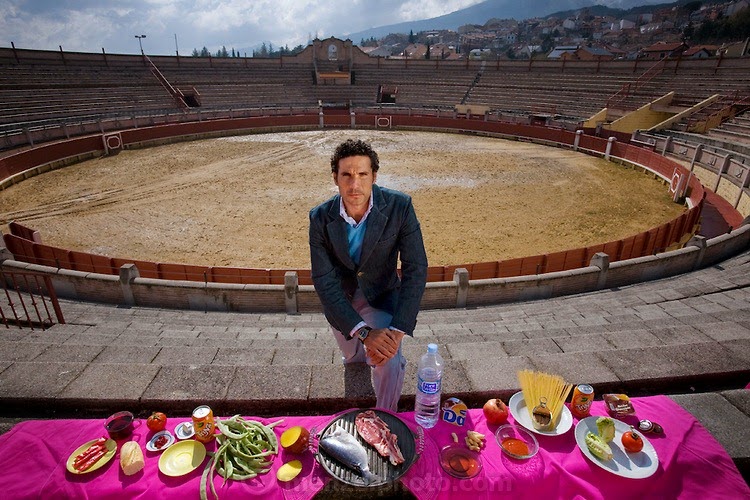 Oscar Higares, a professional bullfighter, with his typical day’s worth of food in the bullring in Miraflores De La Sierra, Spain, on a training day.
Oscar Higares, a professional bullfighter, with his typical day’s worth of food in the bullring in Miraflores De La Sierra, Spain, on a training day.
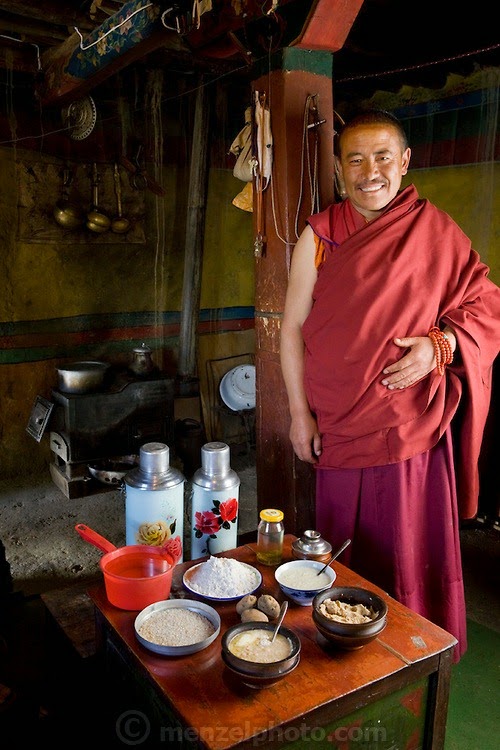
 Curtis Newcomer, a U.S. Army soldier, with his typical day’s worth of food at the National Training Center at Fort Irwin in California’s Mojave Desert. The caloric value of his day’s worth of food in the month of September was 4,000 kcals. He is 20 years old; 6 feet, 5 inches tall; and 195 pounds. During a two-week stint before his second deployment to Iraq, he spends 12-hour shifts manning the radio communication tent (behind him). He eats his morning and evening meals in a mess hall tent, but his lunch consists of a variety of instant meals in the form of MREs (Meals, Ready-to-Eat). His least favorite is the cheese and veggie omelet.
Curtis Newcomer, a U.S. Army soldier, with his typical day’s worth of food at the National Training Center at Fort Irwin in California’s Mojave Desert. The caloric value of his day’s worth of food in the month of September was 4,000 kcals. He is 20 years old; 6 feet, 5 inches tall; and 195 pounds. During a two-week stint before his second deployment to Iraq, he spends 12-hour shifts manning the radio communication tent (behind him). He eats his morning and evening meals in a mess hall tent, but his lunch consists of a variety of instant meals in the form of MREs (Meals, Ready-to-Eat). His least favorite is the cheese and veggie omelet.
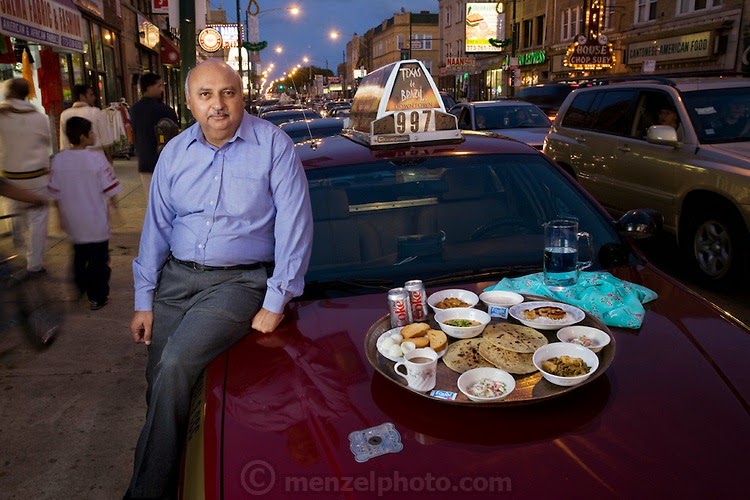 Din Memon, a Chicago taxi driver, with his typical day’s worth of food arranged on the hood of his leased cab on Devon Avenue in Chicago, Illinois. The caloric value of his day’s worth of food in the month of September was 2,000 kcals. He is 59 years of age; 5 feet, 7 inches tall; and 240 pounds. His favorite food includes Kebabs, chicken tika, or biryani. Tika is dry-roasted marinated meat, and biryani is a rice dish with meat, fish, or vegetables that is highly seasoned with saffron or turmeric.
Din Memon, a Chicago taxi driver, with his typical day’s worth of food arranged on the hood of his leased cab on Devon Avenue in Chicago, Illinois. The caloric value of his day’s worth of food in the month of September was 2,000 kcals. He is 59 years of age; 5 feet, 7 inches tall; and 240 pounds. His favorite food includes Kebabs, chicken tika, or biryani. Tika is dry-roasted marinated meat, and biryani is a rice dish with meat, fish, or vegetables that is highly seasoned with saffron or turmeric.
 Conrad Tolby, an American long-distance truck driver, photographed with a typical day’s worth of food on the cab hood of his semi tractor trailer at the Flying J truck stop in Effingham, Illinois. The caloric value of his meals this working weekday was 5,400 kcals. At the time of the photograph Tolby was 54 years of age; 6 feet, 2 inches tall; and weighed 260 pounds. His meals on the road haven’t changed much over the years – truck stop and fast-food fare, heavy on the grease, despite warnings from his doctor. He has more reason than most to watch his diet, as he’s suffered two heart attacks both in the cab of his truck. The trucker travels with his best friend and constant companion, a five-year-old sharpie dog, named Imperial Fancy Pants, who gets his own McDonald’s burger and splits the fries with Conrad.
Conrad Tolby, an American long-distance truck driver, photographed with a typical day’s worth of food on the cab hood of his semi tractor trailer at the Flying J truck stop in Effingham, Illinois. The caloric value of his meals this working weekday was 5,400 kcals. At the time of the photograph Tolby was 54 years of age; 6 feet, 2 inches tall; and weighed 260 pounds. His meals on the road haven’t changed much over the years – truck stop and fast-food fare, heavy on the grease, despite warnings from his doctor. He has more reason than most to watch his diet, as he’s suffered two heart attacks both in the cab of his truck. The trucker travels with his best friend and constant companion, a five-year-old sharpie dog, named Imperial Fancy Pants, who gets his own McDonald’s burger and splits the fries with Conrad.

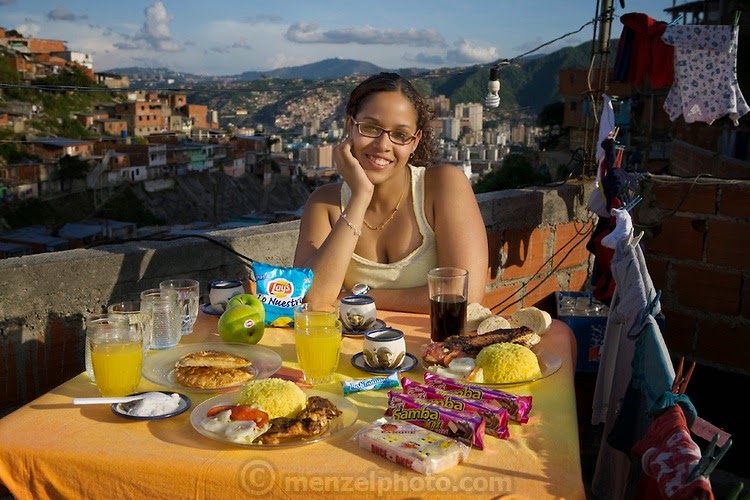 Katherine Navas, a high school student, on the roof of her family’s home in a barrio in Caracas, Venezuela with her typical day’s worth of food. The caloric value of her typical day’s worth of food in the month of November was 4,000 kcals. She is 18 years of age; 5 feet, 7 inches tall; and 157 pounds.
Katherine Navas, a high school student, on the roof of her family’s home in a barrio in Caracas, Venezuela with her typical day’s worth of food. The caloric value of her typical day’s worth of food in the month of November was 4,000 kcals. She is 18 years of age; 5 feet, 7 inches tall; and 157 pounds.
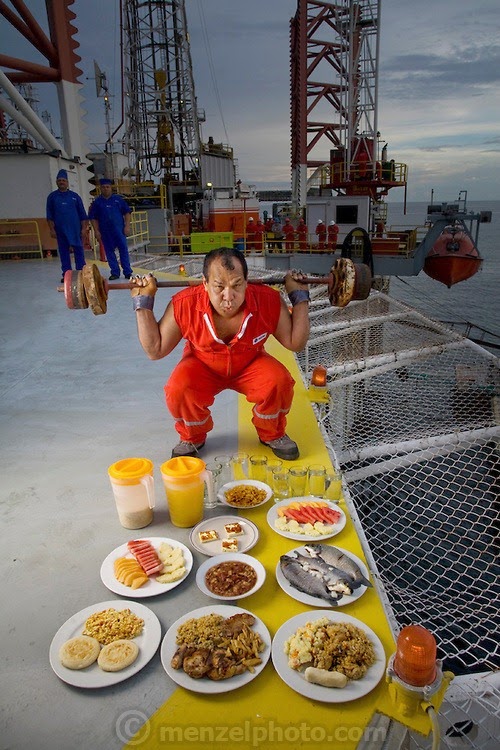
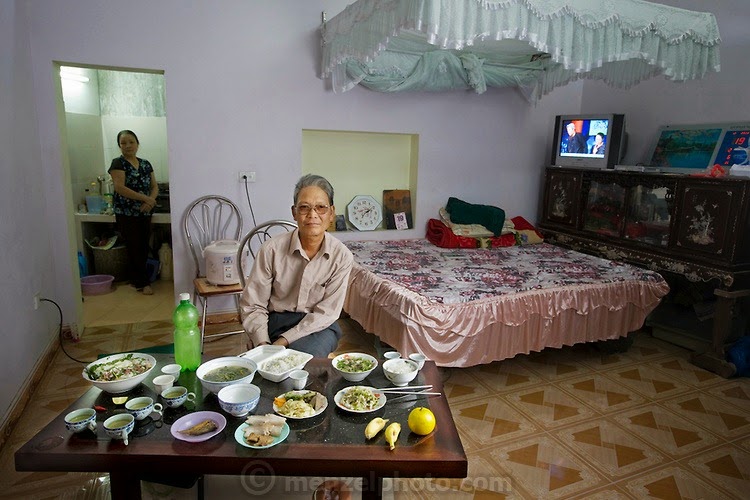 Nguyên Van Thuan, a war veteran, with his wife in their studio apartment with his typical day’s worth of food
Nguyên Van Thuan, a war veteran, with his wife in their studio apartment with his typical day’s worth of food


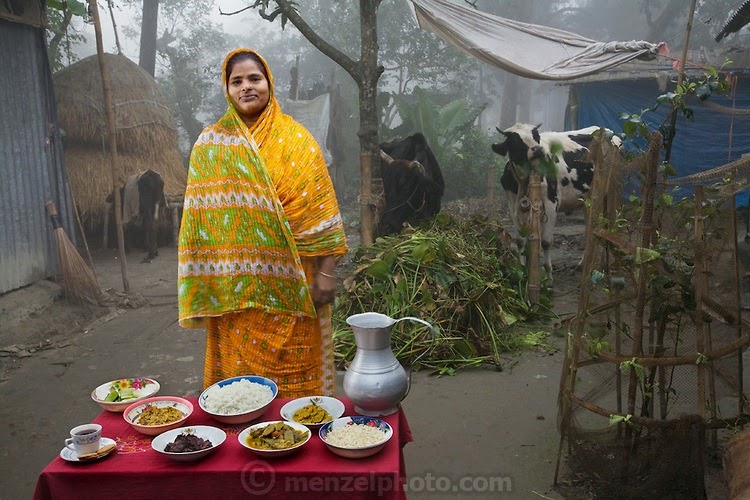 Shahnaz Begum, a mother of four, outside her home with her microloan-financed cows and her typical day’s worth of food outside her home in the village of Bari Majlish, an hour outside Dhaka.
Shahnaz Begum, a mother of four, outside her home with her microloan-financed cows and her typical day’s worth of food outside her home in the village of Bari Majlish, an hour outside Dhaka.
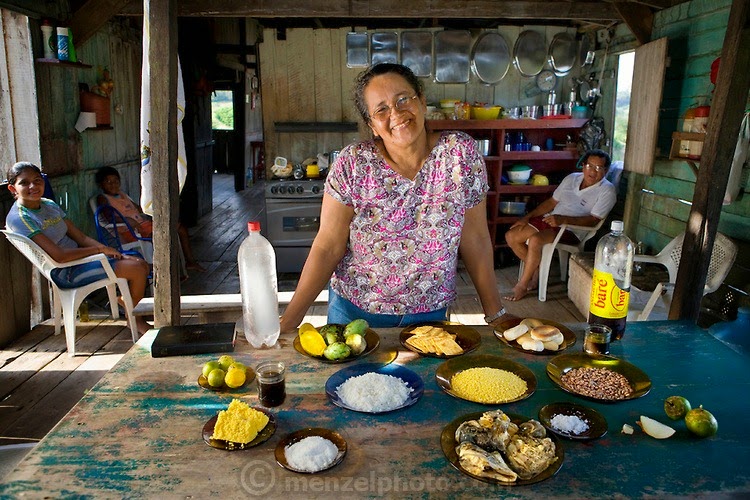 Solange Da Silva Correia, a rancher’s wife, with family members in their house overlooking the Solimoes River, with her typical day’s worth of food. The caloric value of her day’s worth of food on a typical day in the month of November was 3400 kcals. She is 49 years of age; 5 feet 2.5 inches tall; and 168 pounds. She and her husband, Francisco (sitting behind her, at right), live outside the village of Caviana with three of their four grandchildren in a house built by his grandfather. They raise cattle to earn income and sometimes a sheep or two to eat themselves, but generally they rely on their daily catch of fish, and eggs from their chickens, for animal protein. They harvest fruit and Brazil nuts on their property and buy rice, pasta, and cornmeal from a store in Caviana. They also purchase Solange’s favorite soft drink made from guarana, a highly caffeinated berry indigenous to the country.
Solange Da Silva Correia, a rancher’s wife, with family members in their house overlooking the Solimoes River, with her typical day’s worth of food. The caloric value of her day’s worth of food on a typical day in the month of November was 3400 kcals. She is 49 years of age; 5 feet 2.5 inches tall; and 168 pounds. She and her husband, Francisco (sitting behind her, at right), live outside the village of Caviana with three of their four grandchildren in a house built by his grandfather. They raise cattle to earn income and sometimes a sheep or two to eat themselves, but generally they rely on their daily catch of fish, and eggs from their chickens, for animal protein. They harvest fruit and Brazil nuts on their property and buy rice, pasta, and cornmeal from a store in Caviana. They also purchase Solange’s favorite soft drink made from guarana, a highly caffeinated berry indigenous to the country.
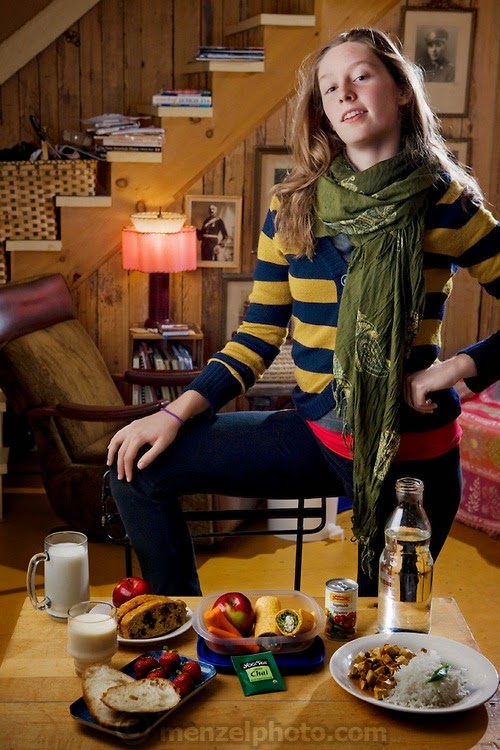
 Willie Ishulutak, an Innuit soapstone carver in Iqaluit, Nunavut, Canada with one day’s typical food, and drink. The caloric value of his day’s worth of food on a typical day in the month of October was 4700 kcals. He is 29 years of age; 5 feet, 9 inches and 143 pounds. Carving is one of the few traditions of the Inuit that has made the leap into the wage-earning modern world. Willie says he can complete two or three pieces in a day, then sell them in the evening at bars and restaurants in Iqaluit for $100 ($93 USD) each, and sometimes more.
Willie Ishulutak, an Innuit soapstone carver in Iqaluit, Nunavut, Canada with one day’s typical food, and drink. The caloric value of his day’s worth of food on a typical day in the month of October was 4700 kcals. He is 29 years of age; 5 feet, 9 inches and 143 pounds. Carving is one of the few traditions of the Inuit that has made the leap into the wage-earning modern world. Willie says he can complete two or three pieces in a day, then sell them in the evening at bars and restaurants in Iqaluit for $100 ($93 USD) each, and sometimes more.
 Neil Jones, the Director of Operations at the CN Tower in Toronto, Canada, with one day’s worth of his typical food in the skypod of the tower. The caloric value of his day’s worth of food on a typical day in June was 2600 kcals. He is 44 years of age; 6 feet, 2 inches tall and 220 pounds. The viewing platform is above the world’s highest revolving restaurant, which revolves 360 degrees. The award-winning restaurant has awe-inspiring views and, for a tourist destination, surprisingly excellent food. The pricey entrance and elevator fee of about $25 per person is waived if you eat at the restaurant, making it cheaper to have lunch than to just see the sights.
Neil Jones, the Director of Operations at the CN Tower in Toronto, Canada, with one day’s worth of his typical food in the skypod of the tower. The caloric value of his day’s worth of food on a typical day in June was 2600 kcals. He is 44 years of age; 6 feet, 2 inches tall and 220 pounds. The viewing platform is above the world’s highest revolving restaurant, which revolves 360 degrees. The award-winning restaurant has awe-inspiring views and, for a tourist destination, surprisingly excellent food. The pricey entrance and elevator fee of about $25 per person is waived if you eat at the restaurant, making it cheaper to have lunch than to just see the sights.
 Xu Zhipeng, a freelance computer graphics artist and Internet gamer, with his typical day’s worth of food in his rented chair at the Ming Wang Internet Café in Shanghai, China. The caloric value of his day’s worth of food in June was 1600 kcals. He is 23 years of age; 6 feet, 2 inches and 157 pounds. He lives at his computer station, day and night, sleeping there when he’s tired and showering once a week at a friend’s apartment. His longest continuous game lasted three days and nights. When he tires of gaming at the café he reads fantasy books.
Xu Zhipeng, a freelance computer graphics artist and Internet gamer, with his typical day’s worth of food in his rented chair at the Ming Wang Internet Café in Shanghai, China. The caloric value of his day’s worth of food in June was 1600 kcals. He is 23 years of age; 6 feet, 2 inches and 157 pounds. He lives at his computer station, day and night, sleeping there when he’s tired and showering once a week at a friend’s apartment. His longest continuous game lasted three days and nights. When he tires of gaming at the café he reads fantasy books.
 Chen Zhen, a university student, with her typical day’s worth of food on Nanjing East Road in Shanghai, China. The caloric value of her typical day’s worth of food in June was 2600 kcals. She is 20 years of age; 5 feet, 5 inches tall and 106 pounds. Although she doesn’t care for noodles or rice, a special rice roll is her favorite snack: black glutinous rice wrapped around youtiao (fried bread), pickled vegetables, mustard greens, and flosslike threads of dried pork. Zhen and her friends eat at KFC about three times a week, something they couldn’t afford without the company’s coupons. Meanwhile, her father and grandparents, who live in a tiny apartment in northeast Shanghai, go without meat during the week so they can afford to share a special meal with Zhen on her weekend visits.
Chen Zhen, a university student, with her typical day’s worth of food on Nanjing East Road in Shanghai, China. The caloric value of her typical day’s worth of food in June was 2600 kcals. She is 20 years of age; 5 feet, 5 inches tall and 106 pounds. Although she doesn’t care for noodles or rice, a special rice roll is her favorite snack: black glutinous rice wrapped around youtiao (fried bread), pickled vegetables, mustard greens, and flosslike threads of dried pork. Zhen and her friends eat at KFC about three times a week, something they couldn’t afford without the company’s coupons. Meanwhile, her father and grandparents, who live in a tiny apartment in northeast Shanghai, go without meat during the week so they can afford to share a special meal with Zhen on her weekend visits.
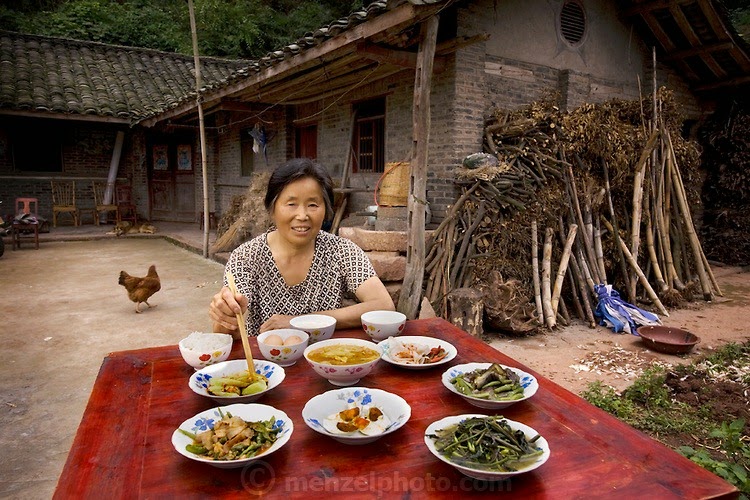 Lan Guihua, a widowed farmer, in front of her home with her typical day’s worth of food in Ganjiagou Village, Sichuan Province, China. The caloric value of her day’s worth of food on a typical day in June was 1900 kcals. She is 68 years of age; 5 feet, 3 inches tall; and 121 pounds. Her farmhouse is tucked into a bamboo-forested hillside beneath her husband’s grave, and the courtyard opens onto a view of citrus groves and vegetable fields. Although homegrown vegetables and rice are her staples, chicken feathers and a bowl that held scalding water for easier feather plucking are clues to the meat course of a special meal for visitors. In this region, each rural family is its own little food factory and benefits from thousands of years of agricultural knowledge passed down from generation to generation.
Lan Guihua, a widowed farmer, in front of her home with her typical day’s worth of food in Ganjiagou Village, Sichuan Province, China. The caloric value of her day’s worth of food on a typical day in June was 1900 kcals. She is 68 years of age; 5 feet, 3 inches tall; and 121 pounds. Her farmhouse is tucked into a bamboo-forested hillside beneath her husband’s grave, and the courtyard opens onto a view of citrus groves and vegetable fields. Although homegrown vegetables and rice are her staples, chicken feathers and a bowl that held scalding water for easier feather plucking are clues to the meat course of a special meal for visitors. In this region, each rural family is its own little food factory and benefits from thousands of years of agricultural knowledge passed down from generation to generation.
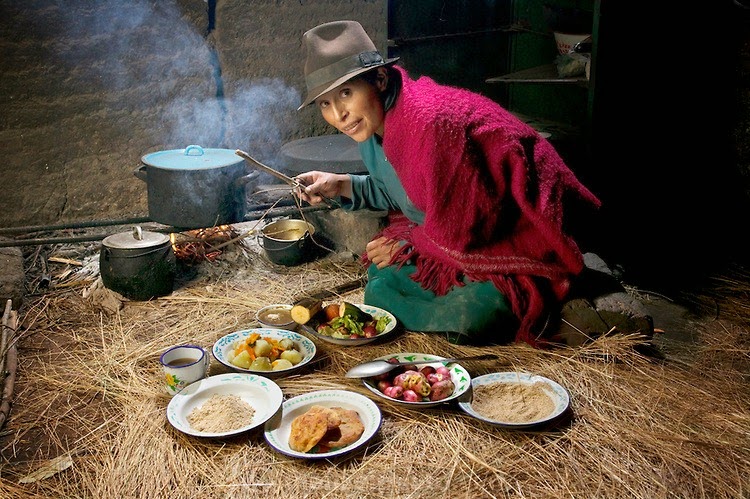 Maria Ermelinda Ayme Sichigalo, a farmer and mother of eight with her typical day’s worth of food in her adobe kitchen house in Tingo village, central Andes, Ecuador. The caloric value of her typical day’s worth of food in the month of September was 3800 kcals. She is 37 years of age; 5 feet, 3 inches tall; and 119 pounds. With no tables or chairs, Ermelinda cooks all the family’s meals while kneeling over the hearth on the earthen floor, tending an open fire of sticks and straw. Guinea pigs that skitter about looking for scraps or spilled grain will eventually end up on the fire themselves when the family eats them for a holiday treat. Because there is no chimney, the beams and thatch roof are blackened by smoke. Unvented smoke from cooking fires accounts for a high level of respiratory disease and, in one study in rural Ecuador, was accountable for half of infant mortality.
Maria Ermelinda Ayme Sichigalo, a farmer and mother of eight with her typical day’s worth of food in her adobe kitchen house in Tingo village, central Andes, Ecuador. The caloric value of her typical day’s worth of food in the month of September was 3800 kcals. She is 37 years of age; 5 feet, 3 inches tall; and 119 pounds. With no tables or chairs, Ermelinda cooks all the family’s meals while kneeling over the hearth on the earthen floor, tending an open fire of sticks and straw. Guinea pigs that skitter about looking for scraps or spilled grain will eventually end up on the fire themselves when the family eats them for a holiday treat. Because there is no chimney, the beams and thatch roof are blackened by smoke. Unvented smoke from cooking fires accounts for a high level of respiratory disease and, in one study in rural Ecuador, was accountable for half of infant mortality.























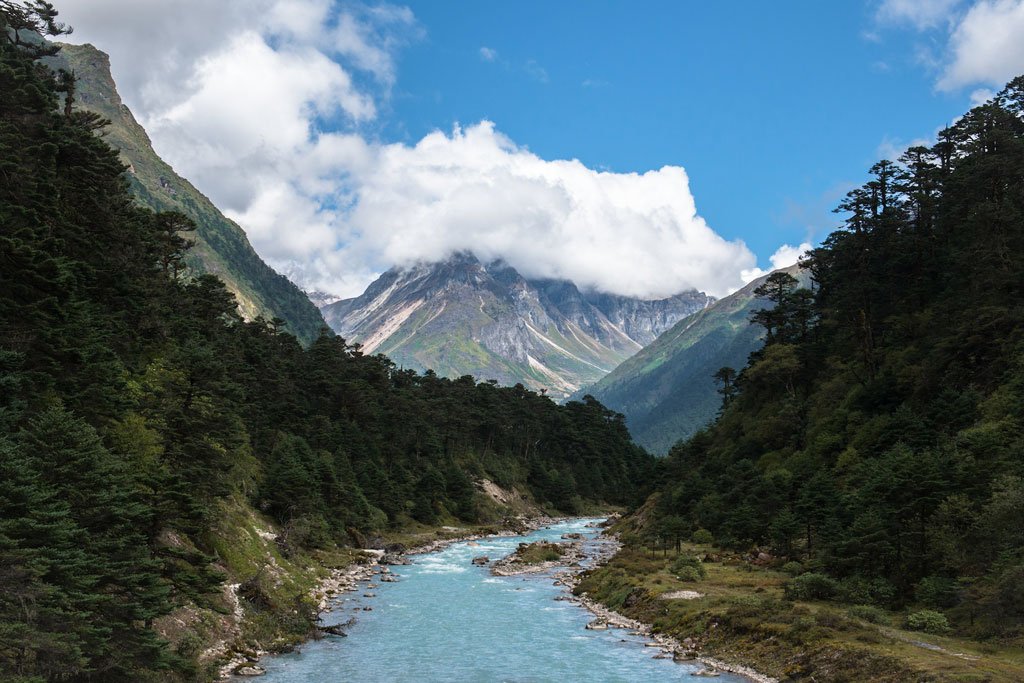 Yumthang Valley is a grazing pasture surrounded by the Himalayan mountains in North Sikkim. At a height of 3,564 metres above sea level, it’s popularly known as the ‘Valley of Flowers’.
Yumthang Valley is a grazing pasture surrounded by the Himalayan mountains in North Sikkim. At a height of 3,564 metres above sea level, it’s popularly known as the ‘Valley of Flowers’.
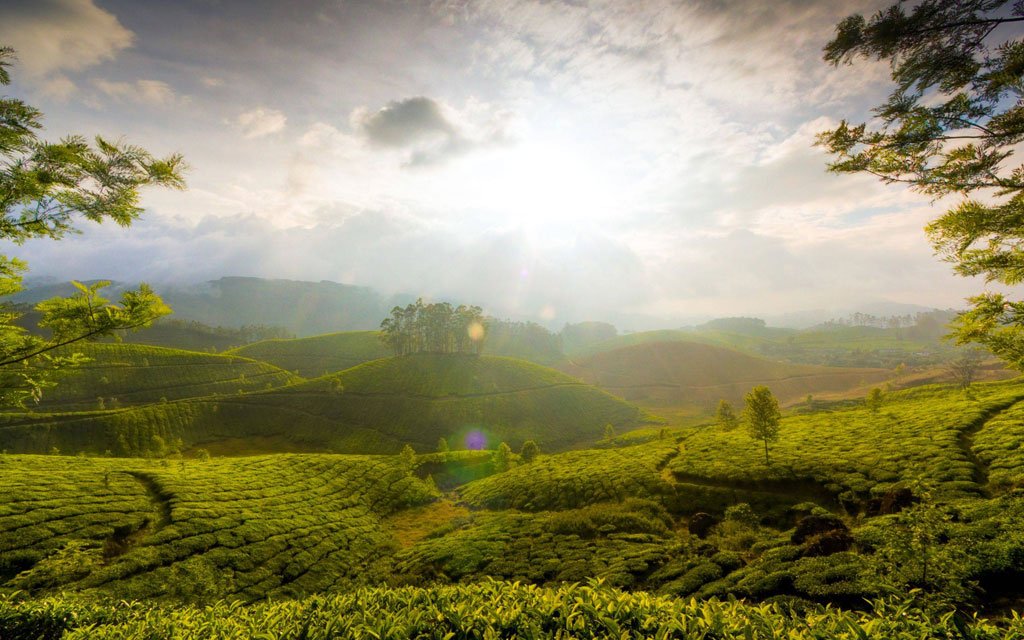 Munnar is a town that’s situated in the southwestern region of Kerala. It’s practically covered fully with Tea plantations, some as high as 7000 feet above sea level.
Munnar is a town that’s situated in the southwestern region of Kerala. It’s practically covered fully with Tea plantations, some as high as 7000 feet above sea level.
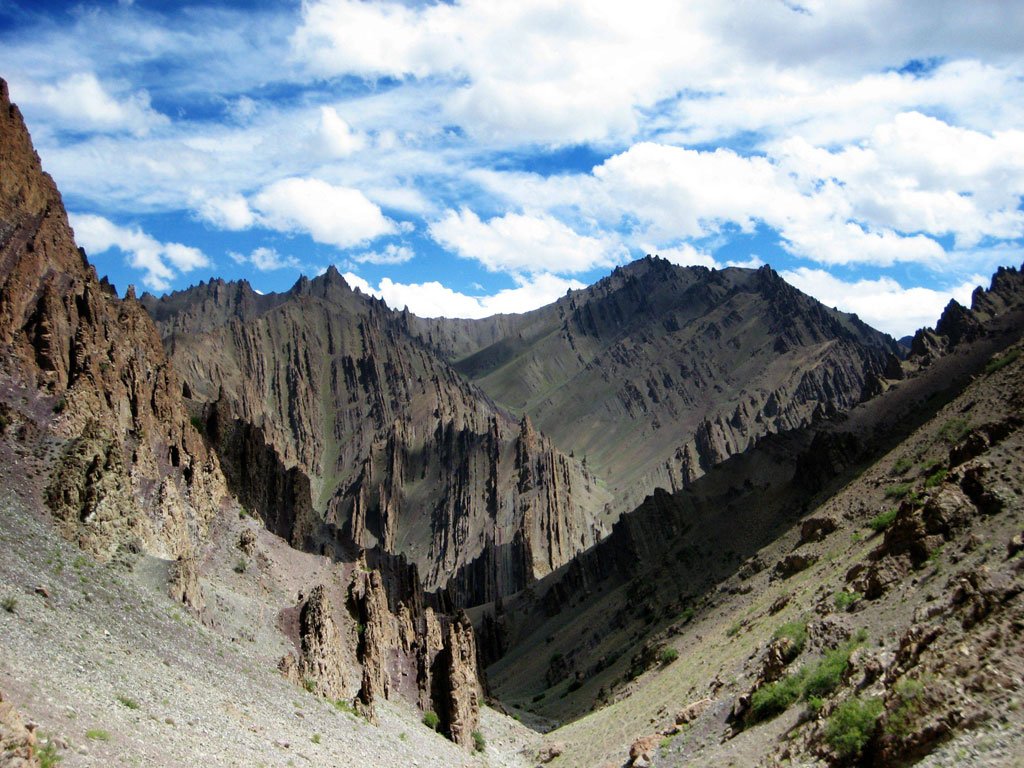 At 11, 845 feet, Stok Kangri in Stok Range has is a popular mountain among climbers and mountaineers. It’s often considered as a practice run for Everest.
At 11, 845 feet, Stok Kangri in Stok Range has is a popular mountain among climbers and mountaineers. It’s often considered as a practice run for Everest.
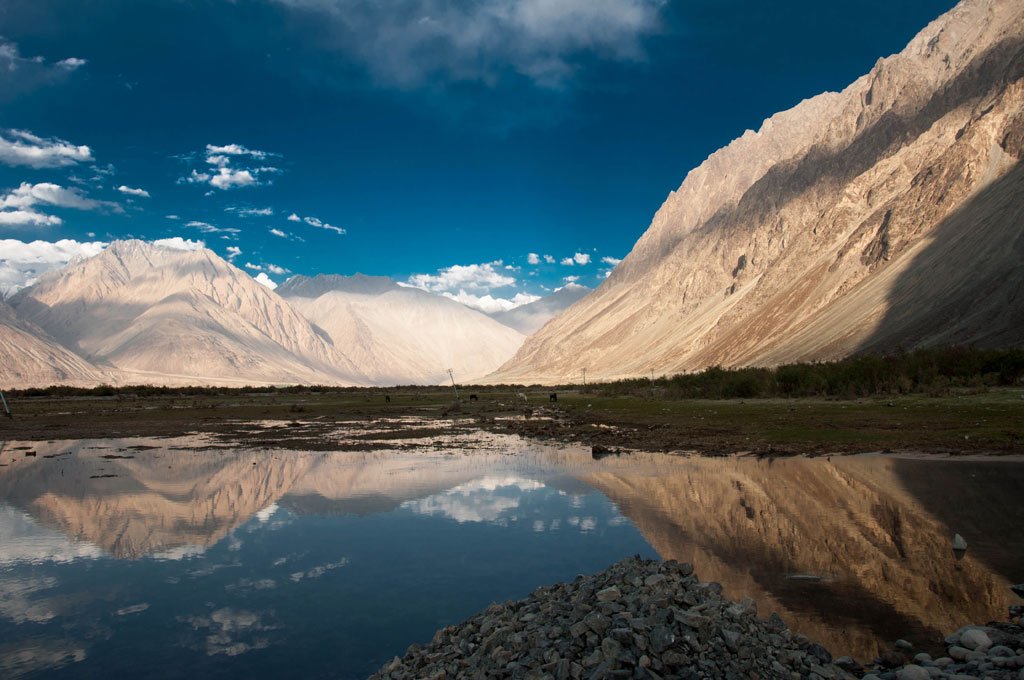 Nubra is a high altitude cold desert with rare precipitation and scant vegetation.
Nubra is a high altitude cold desert with rare precipitation and scant vegetation.
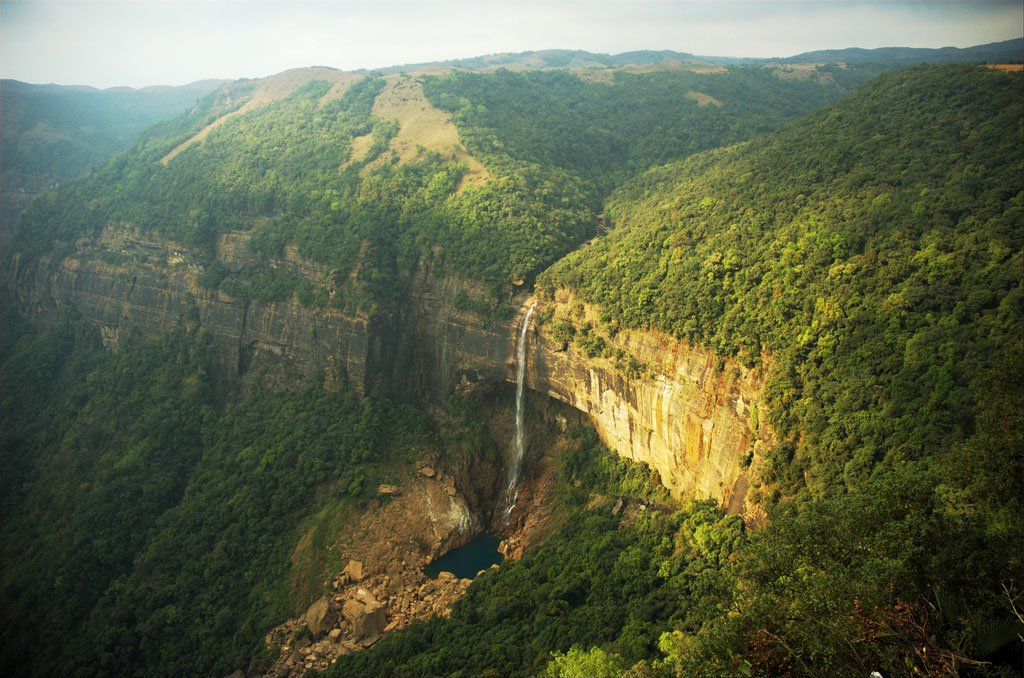 Located near Cherrapunji, one of the wettest places on earth, Nohkalikai Falls is one of the tallest plunge waterfalls in India. Name of the falls (in Khasi language – “Jump of Ka Likai”) is linked to a legend about a local woman, Likai, who after a family tragedy became insane and jumped off the cliff next to the falls.
Located near Cherrapunji, one of the wettest places on earth, Nohkalikai Falls is one of the tallest plunge waterfalls in India. Name of the falls (in Khasi language – “Jump of Ka Likai”) is linked to a legend about a local woman, Likai, who after a family tragedy became insane and jumped off the cliff next to the falls.
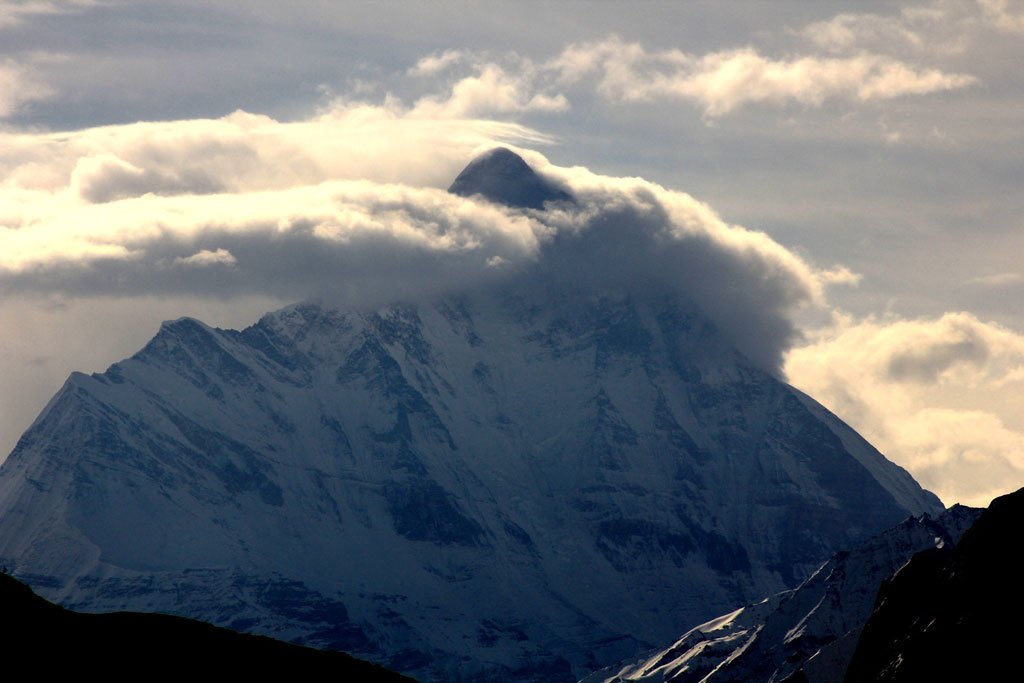 It’s the second highest mountain in India. While the peak is not that easy to climb for regular folks like us, but the surrounding Nanda Devi National Park is a must visit atleast once in a lifetime.
It’s the second highest mountain in India. While the peak is not that easy to climb for regular folks like us, but the surrounding Nanda Devi National Park is a must visit atleast once in a lifetime.
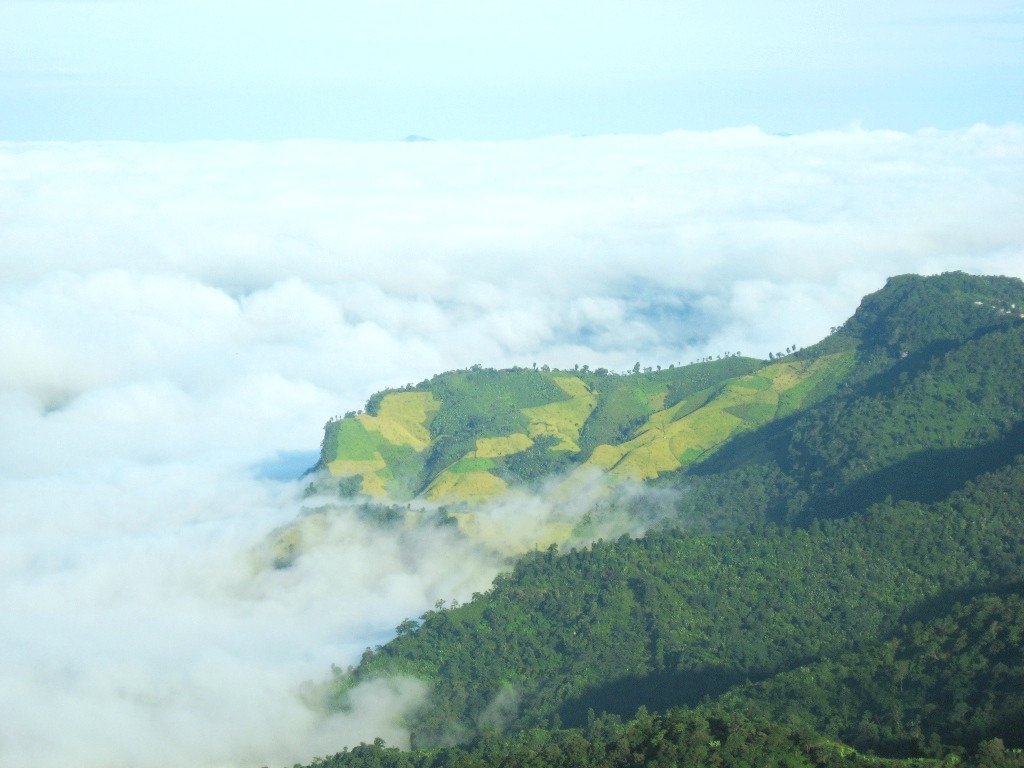 Mizoram is a land of rolling hills, valleys, rivers and lakes. As many as 21 major hill ranges or peaks of different heights run through the length and breadth of the state, with plains scattered here and there.
Mizoram is a land of rolling hills, valleys, rivers and lakes. As many as 21 major hill ranges or peaks of different heights run through the length and breadth of the state, with plains scattered here and there.
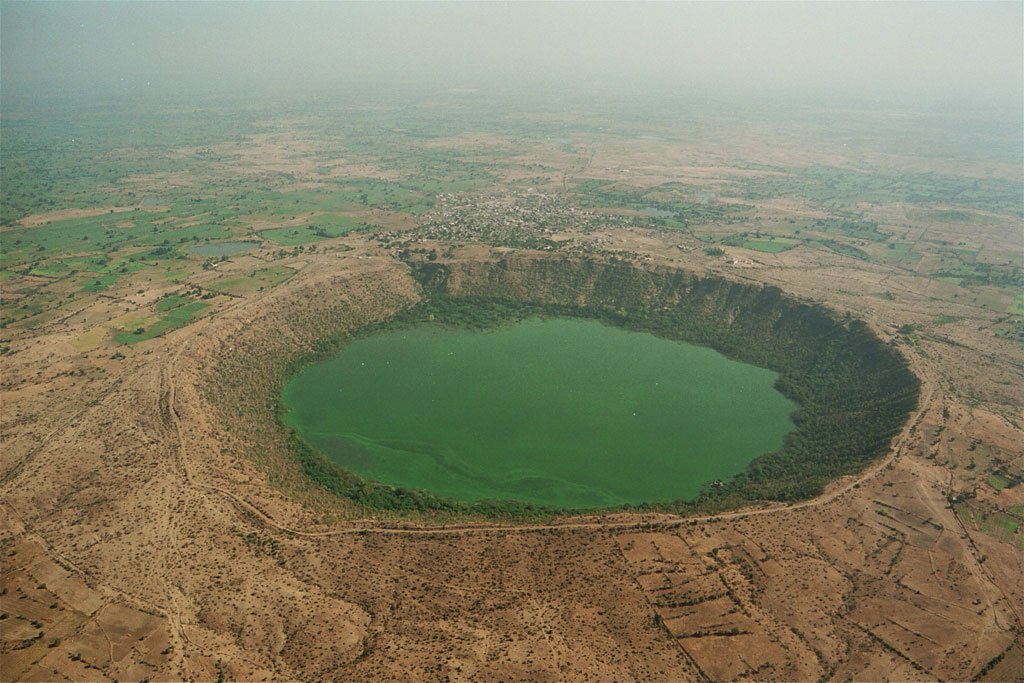 The Lonar Lake is a saline soda lake located at Lonar in Buldana district, Maharashtra, India which was created by a meteor impact.
The Lonar Lake is a saline soda lake located at Lonar in Buldana district, Maharashtra, India which was created by a meteor impact.
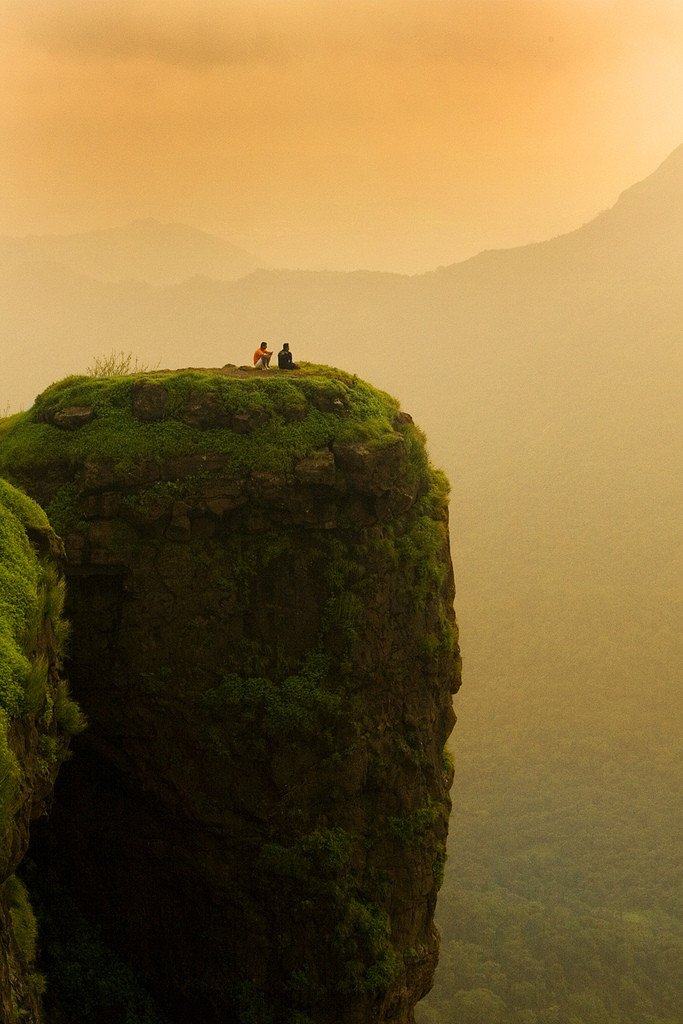 The smallest hill station in India, Matheran which is only 90 km from Mumbai, provides a pretty dramatic view of the sunset and the sunrise.
The smallest hill station in India, Matheran which is only 90 km from Mumbai, provides a pretty dramatic view of the sunset and the sunrise.
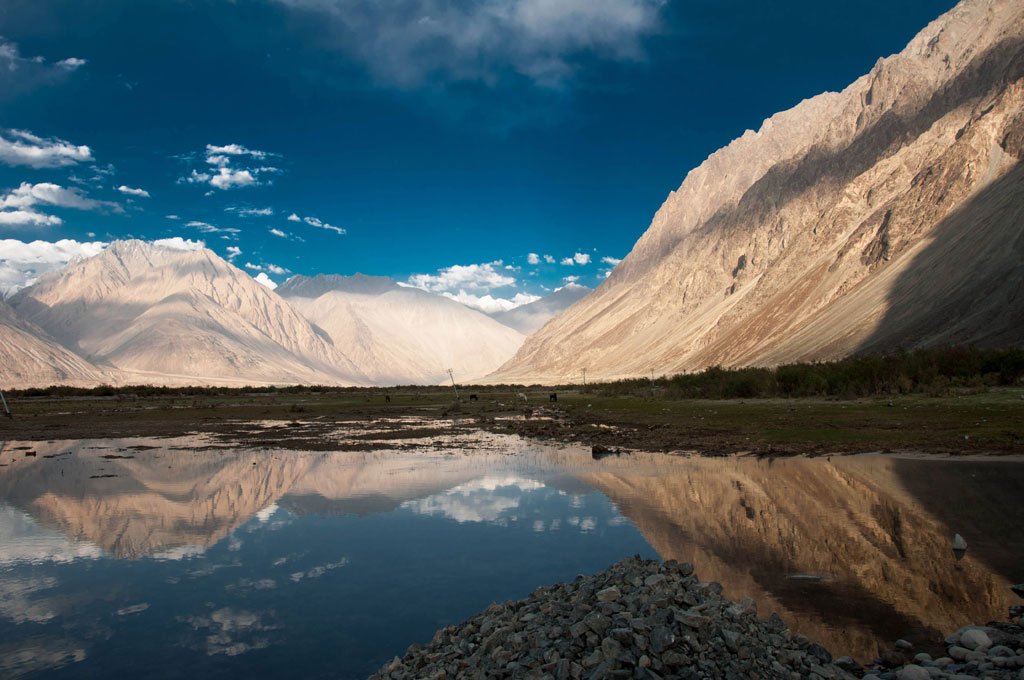 Leh, the capital of the Himalayan kingdom of Ladakh is best experienced via road trips from New Delhi.
Leh, the capital of the Himalayan kingdom of Ladakh is best experienced via road trips from New Delhi.
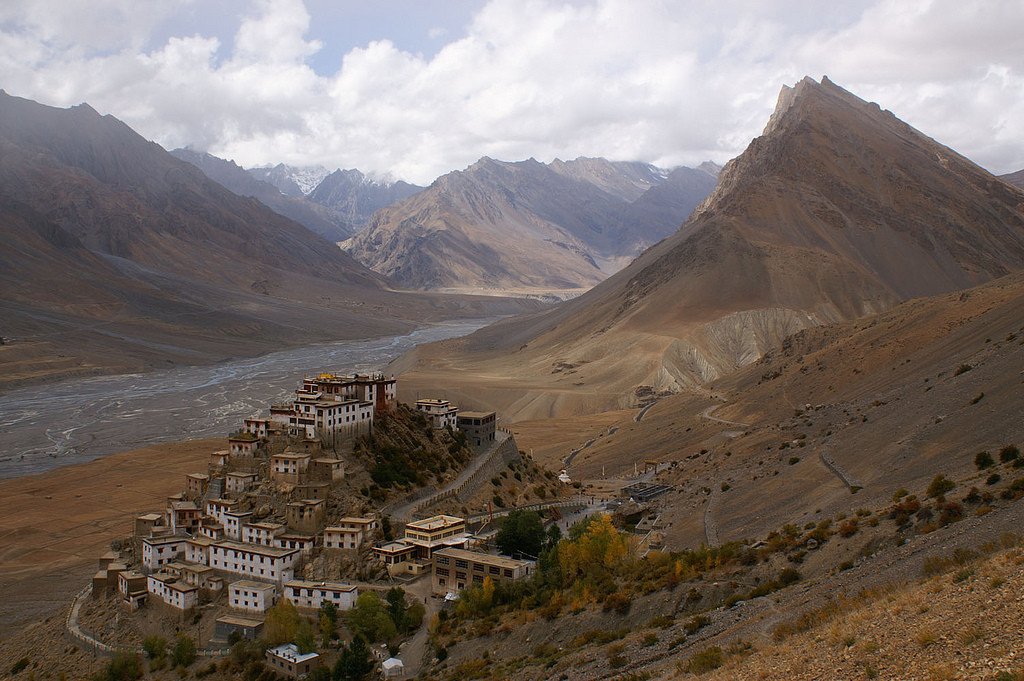 Key Gompa is a Tibetian Buddhist Monastery located on top of a hill at an altitude of 13, 668 feet above sea level close to the Spiti river in Himachal Pradesh. It reportedly, was started by 100 monks in 1855.
Key Gompa is a Tibetian Buddhist Monastery located on top of a hill at an altitude of 13, 668 feet above sea level close to the Spiti river in Himachal Pradesh. It reportedly, was started by 100 monks in 1855.
 It’s not called paradise on Earth for nothing.
It’s not called paradise on Earth for nothing.
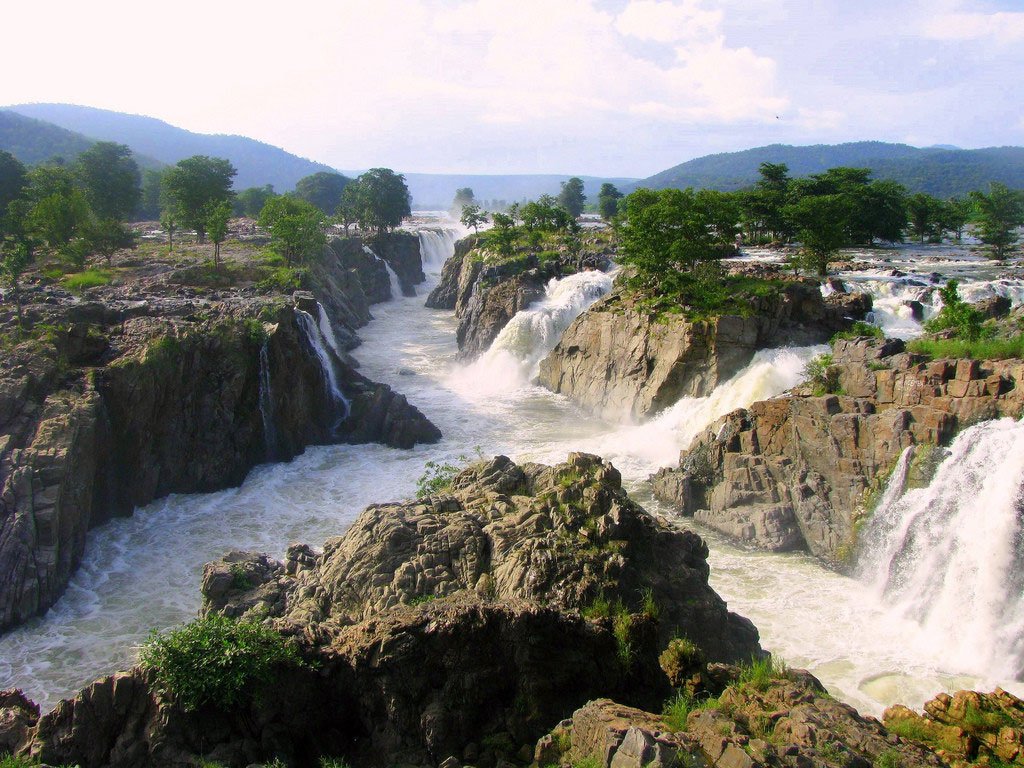 13. Hoggenakal Falls
13. Hoggenakal Falls
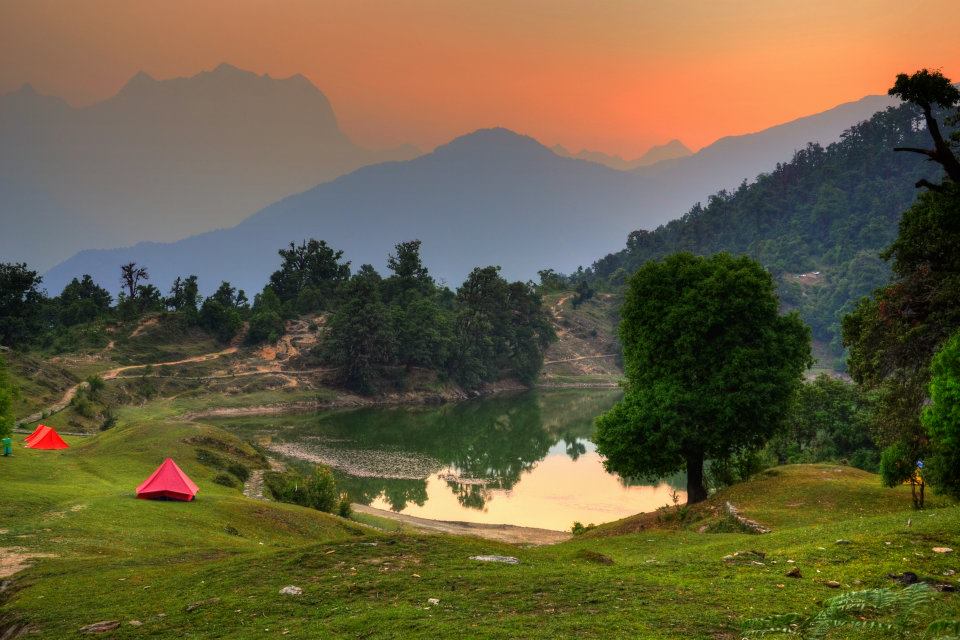 Located at an altitude of 12, 073 Feet, at Tungnath mountains you can also find the oldest Hindu shrine of Lord Shiva.
Located at an altitude of 12, 073 Feet, at Tungnath mountains you can also find the oldest Hindu shrine of Lord Shiva.
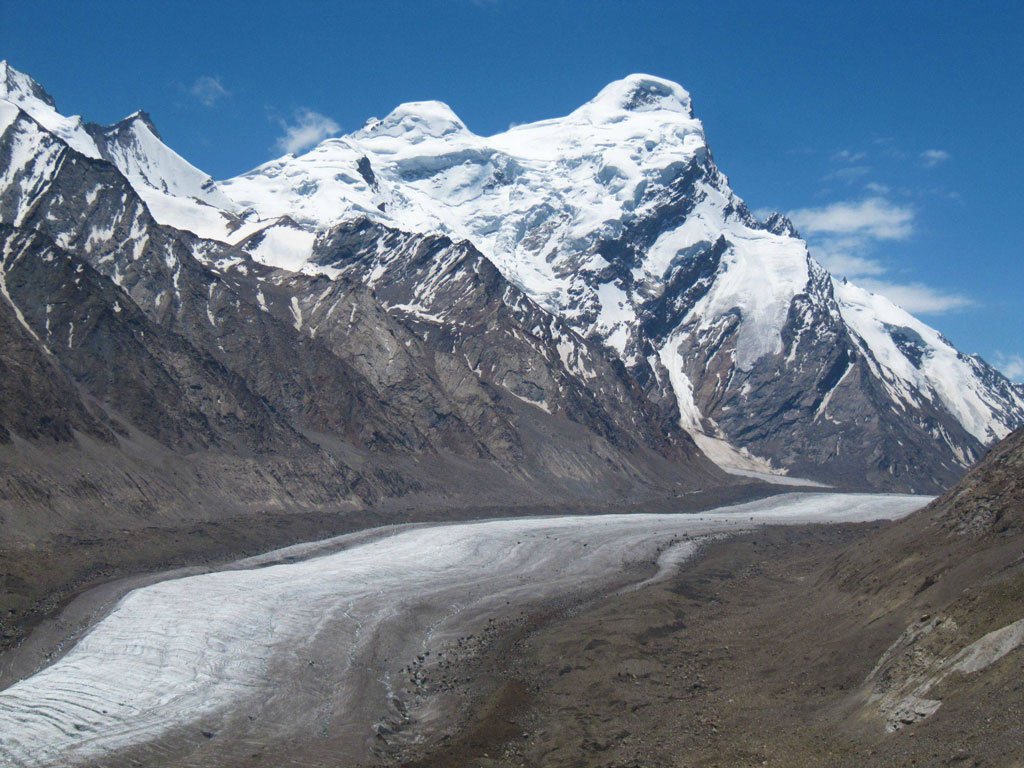 It takes about 2 days to get here from the Srinagar airport.
It takes about 2 days to get here from the Srinagar airport.
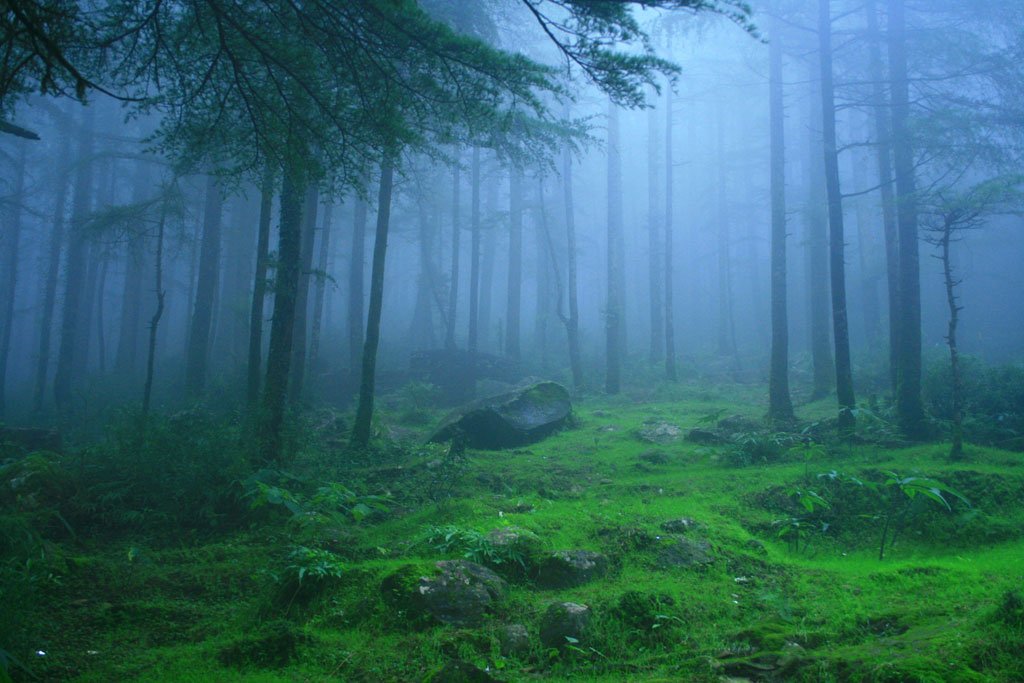
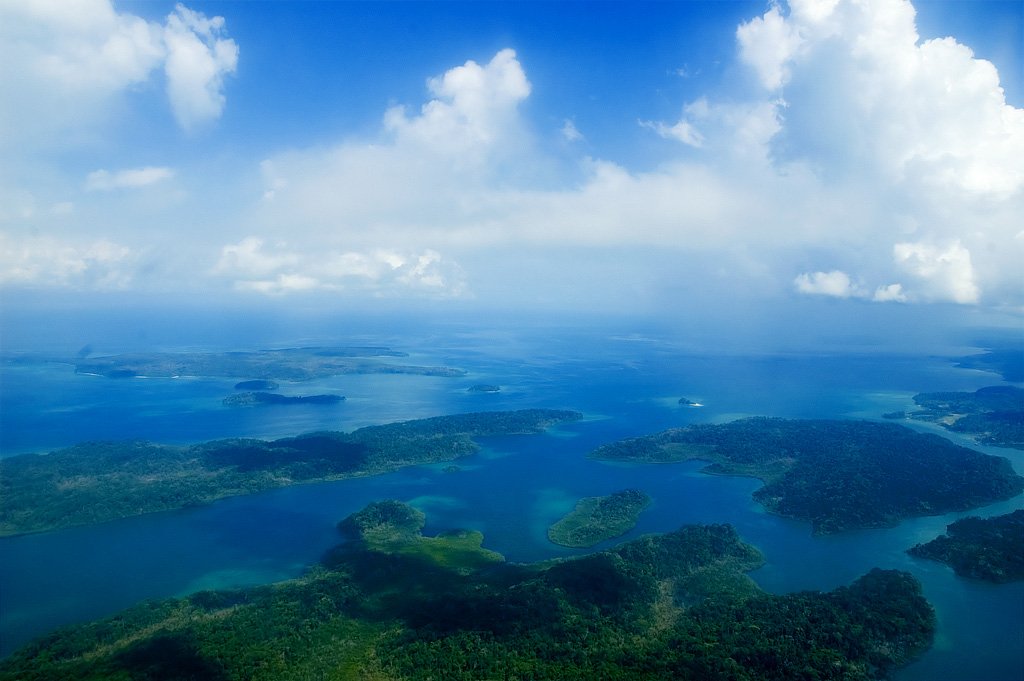 It has 325 islands which cover an area of 6,408 km2, with the Andaman Sea to the east between the islands and the coast of Burma.
It has 325 islands which cover an area of 6,408 km2, with the Andaman Sea to the east between the islands and the coast of Burma.